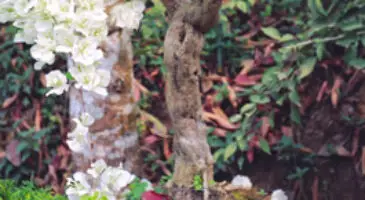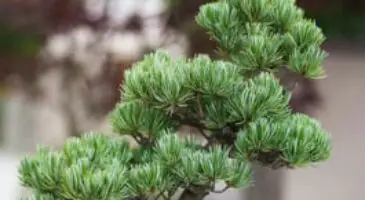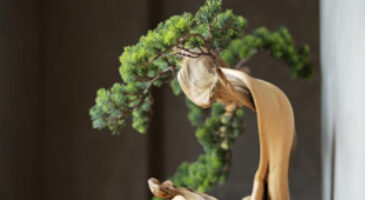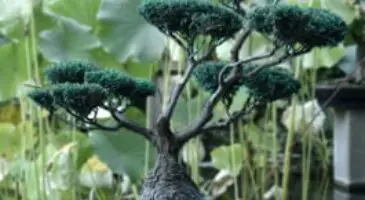Table of Contents
Does a bonsai pot have holes? Or did you notice how other bonsai owners use bonsai pots that don’t have drainage holes? This short guide will help you discover whether bonsai pots need drainage holes or not.
Are drainage holes necessary for bonsai pots
Of course, drainage holes are necessary for your bonsai pots. Drainage facility, root growth, root health, and serration primarily depend on drainage holes. Soil moisture is an essential factor that can affect the overall health of your bonsai and this is also dependent on drainage holes.
Do your bonsai trees need bonsai pots with drainage holes
If you are an avid bonsai grower, you might already know how difficult it is to choose the right bonsai pot for your bonsai plants. In fact, it can be as tricky as growing the bonsai itself. There are now different styles of bonsai pots available in the market right now. There are pots with beautiful ornamental designs while others boast of a more antique appearance.
However, there are many other considerations when buying pots than the aesthetics alone since using the wrong pot might end up killing your bonsai trees.
The bonsai pot you use can affect the lifespan and value of bonsai trees. This is why it is important to understand bonsai pots better and their nature.
There are various types of bonsai pots you can find today but many of them are either shallow or narrow bonsai pots. But, both types share one thing in common. This is none other than the drainage facility that helps maintain root growth and health. This depends on the pot’s drainage holes and is the reason why a bonsai pot requires drainage holes.
However, if you got more time looking after your bonsai trees, it is still possible to grow bonsai trees in pots and containers with no drainage holes. So, while bonsai trees require drainage holes, this is not really a must factor for bonsai plants. But, if you will grow bonsai plants in pots with no drainage holes, it is important to keep a close eye on your plants.
Why are drainage holes essential
There are several primary requirements for bonsai trees to grow healthy and two of them are drainage facility and aeration. Bonsai pots need drainage holes in order to fulfill these factors.
Different types of soils are used for growing bonsai trees and all of them have been ideally developed to release excess water and retain moisture.
If the soil needs to release excess water, drainage holes are needed to make it possible. The roots may start rotting if the pot doesn’t have holes in them.
Drainage holes are also essential since they can also affect the lifespan of bonsai trees. The number of drainage holes in bonsai pots will also depend on the specific type of tree you are growing. Be sure to pay attention to drainage holes when buying bonsai pots.
Benefits of drainage holes in bonsai pots
The number one advantage of drainage holes is that they allow the soil to expel the excess amounts of water in it. But, this is not the only role of drainage holes.
As you might already know, the root system of bonsai trees tends to be weak after root pruning. This is why the bonsai soil should be able to keep these roots healthy.
At this point, drainage holes act as the supporter of the soil. Bonsai roots must absorb air from soil and require nitrogen for them to grow. Drainage holes help with the aeration of the bottom bonsai roots.
While most types of bonsai soil have amazing ability of retaining moisture in soil, there are times when the same moisture can end up damaging new roots. This is why drainage holes are necessary for drying any moisture present in both the soil and the pot itself.
Drainage holes are also important when the time comes that you need to repot your bonsai trees. Once you have pruned the roots, the bonsai tree needs to be tied to the pot using wires. The tree won’t be able to grow roots if the tree will shake after pruning. Drainage holes can come in handy for tying the bonsai trees to their pots.
Drawbacks of drainage holes in bonsai pots
Unfortunately, drainage holes in bonsai pots also have their disadvantages. For starters, soil can go out and pass through these drainage holes. This is a serious disadvantage since the moment soil comes out of the soil, so do the nutrients in them. On the other hand, if the drainage holes are not covered, the soil may dry up fast.
Ants and other pests may also be able to get inside through the holes and feed on the new baby roots of your bonsai trees.
How many drainage holes do bonsai pots need
The number of the drainage holes that a bonsai pot needs will depend on the specific type of tree that you are growing.
Different bonsai plants come from different countries with different climates. All of them have their preferred and specific conditions for proper growth including soil nutrition, aeration, and humidity. This means that you need to make or buy your bonsai pots according to the bonsai trees you will plant in them.
Bonsai pots typically have a minimum of two drainage holes while others have up to four drainage holes. There are also bonsai pots that only have one drainage hole.
It is recommended to use bonsai pots with three or more drainage holes after the initial branch and root pruning since new roots will rot if there is excessive moisture.
You can use bonsai pots with two drainage holes during the second pruning. This is also the time to use bonsai soil with excellent ability of removing excess water.
If your bonsai tree is already mature enough, you can use bonsai pots with any number of drainage holes. The size of the holes can be changed based on the requirements of the bonsai tree.



